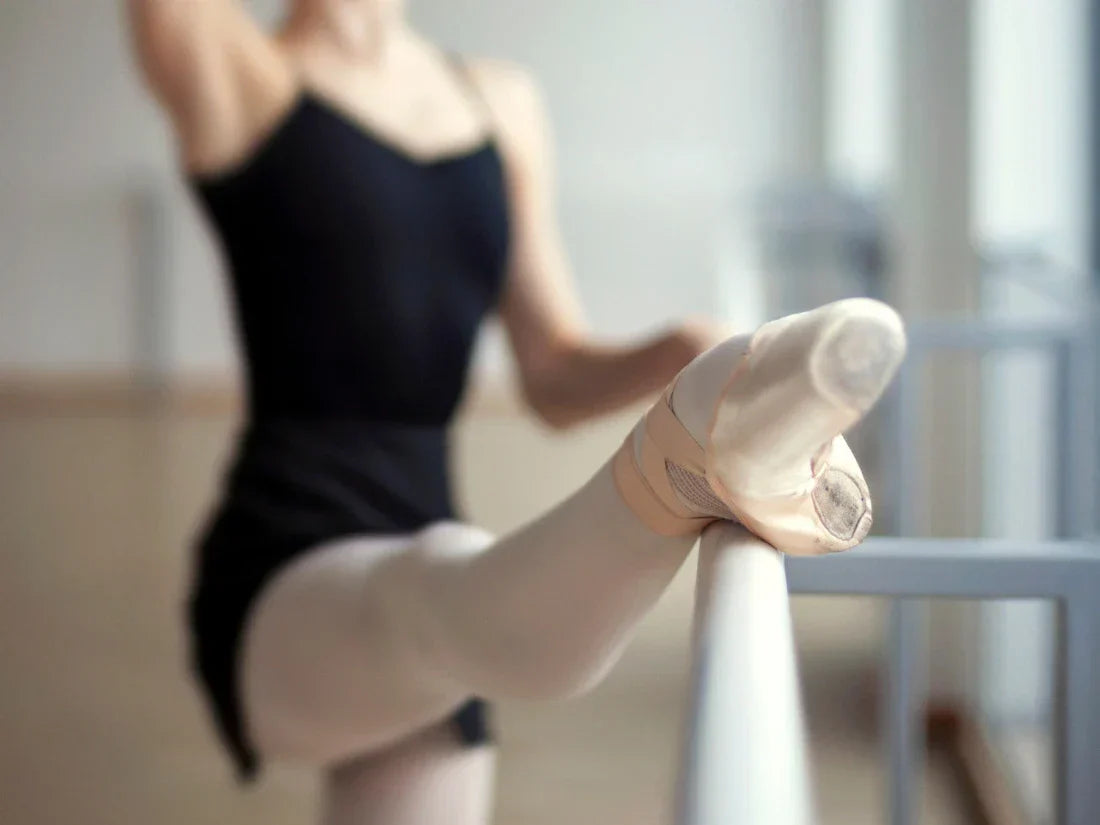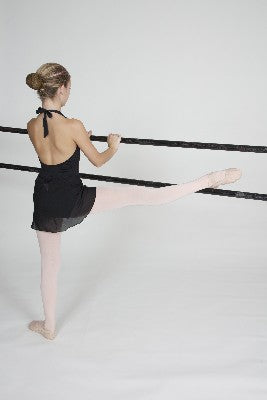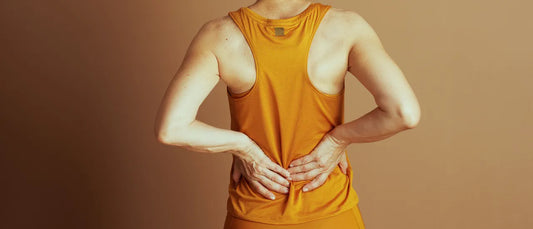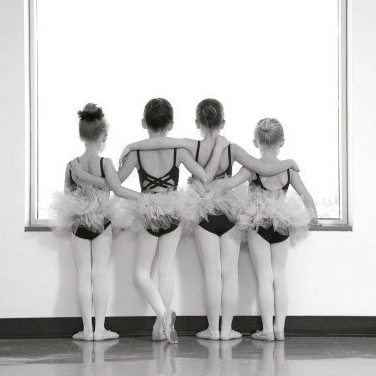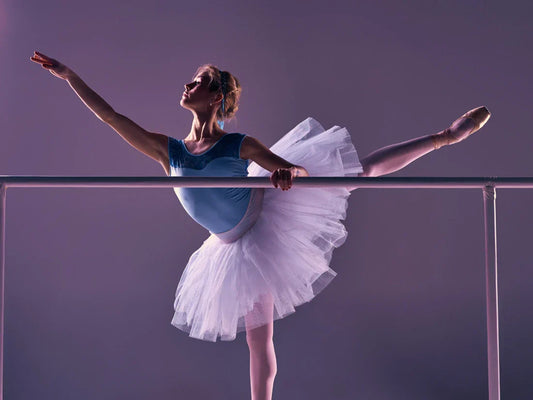In the world of dance, having durable and high-quality equipment is crucial for creating a safe and effective training environment. Dance studios are hubs of constant movement, where barres endure intense daily use. However, finding equipment that can withstand this rigorous wear and tear while maintaining its integrity can be a daunting task for studio owners.
Investing in cheap, poorly made equipment may seem like a cost-effective solution initially, but it often leads to frequent replacements and potential safety hazards. This not only strains budgets but also compromises the quality of training and puts dancers at risk of injuries.
In this article, we'll explore the challenges of finding durable dance equipment, the advantages of investing in sturdy gear, and why the ballet barre is a critical piece of equipment that demands exceptional quality and durability. Additionally, we will delve into the benefits of freestanding ballet barres.
The Challenges of Finding Durable Dance Equipment
As a dance studio owner, finding durable and long-lasting equipment can be a daunting task. The constant wear and tear that dance equipment endures due to frequent use is a significant challenge that cannot be overlooked.
One of the most common issues faced by studio owners is the rapid deterioration of equipment due to heavy usage. Dance floors, in particular, bear the brunt of this wear and tear. With countless hours of dancing, jumping, and pivoting, even the most well-constructed floors can develop cracks, dents, or uneven surfaces over time. This not only compromises the safety of dancers but also affects their ability to perform certain movements correctly.
Similarly, ballet barres, which are essential for proper technique development, can become wobbly or unstable after prolonged use. An unstable barre can lead to improper form, potential injuries, and a lack of confidence in dancers, ultimately hindering their progress and the overall quality of training.
The financial burden of constantly replacing equipment due to poor durability is another significant challenge faced by dance studio owners. Cheap, low-quality equipment may seem like a cost-effective solution initially, but it often ends up costing more in the long run. When equipment breaks down or becomes unusable after a short period, studio owners are forced to allocate funds for replacements, which can strain their budgets and disrupt their operations.
Furthermore, the process of replacing equipment can be time-consuming and disruptive to the studio's daily activities. Coordinating the removal of old equipment, sourcing new replacements, and installing them can lead to class disruptions, potentially inconveniencing students and parents.
Investing in durable, high-quality equipment from the outset may require a larger upfront investment, but it can ultimately save studio owners money in the long run by reducing the need for frequent replacements and minimizing disruptions to their operations.
The Advantages of Sturdy Dance Equipment
Investing in durable and high-quality dance equipment may require a larger upfront investment, but it offers numerous long-term benefits that outweigh the initial costs. One of the most significant advantages is the potential for long-term cost savings.
Sturdy, well-made equipment is designed to withstand the rigors of frequent use, reducing the need for constant replacements. In contrast, cheap, low-quality equipment often breaks down or becomes unusable after a relatively short period, forcing studio owners to allocate funds for replacements on a regular basis. This constant cycle of purchasing new equipment can quickly add up, making the initial investment in durable gear a more cost-effective choice in the long run.
Moreover, durable equipment enhances safety in the studio, which is extremely important for any dance facility. Stable barres provide a safe environment for dancers to practice and perform without the risk of accidents or injuries. A wobbly barre can lead to falls, sprains, or other injuries, potentially resulting in costly medical expenses and legal liabilities for the studio.
Durable equipment can also enhance the overall quality of dance training and performances. High-quality barres provide the necessary support and stability for dancers to execute movements with proper form and technique.
Furthermore, investing in durable equipment can positively impact the studio's reputation and credibility. When students and parents see that the studio prioritizes quality and safety, it instills confidence in the studio's commitment to providing a top-notch dance education experience. This can lead to increased enrollment, retention, and positive word-of-mouth recommendations, ultimately contributing to the studio's long-term success and growth.
Additionally, high-quality equipment often has a more professional and polished appearance, which can enhance the overall aesthetic of the studio. This attention to detail can create a positive first impression for prospective students and their families, reinforcing the studio's dedication to excellence in all aspects of its operations.
In summary, while the upfront cost of durable dance equipment may be higher, the long-term benefits in terms of cost savings, improved safety, enhanced training quality, positive reputation, and credibility make it a worthwhile investment for any dance studio owner committed to providing the best possible experience for their students.
The Unique Importance of the Ballet Barre
The ballet barre holds a unique and crucial role in dance training and technique development. It serves as a vital support and stability aid for dancers as they practice various exercises and movements, helping them maintain proper form, balance, and alignment.
The importance of a high-quality and stable barre cannot be overstated. A wobbly or unstable barre can compromise a dancer's ability to execute movements correctly, leading to potential injuries or the development of improper techniques. Additionally, a low-quality barre may not provide the necessary support for dancers, causing them to lose confidence in their abilities and hindering their progress.
Proper barre height and stability are essential for maintaining correct body alignment and posture during barre work. The industry standard height for a ballet barre is 42 inches, which accommodates dancers of all ages and experience levels. This height ensures that dancers can maintain proper form and alignment while performing exercises, reducing the risk of injury and promoting proper technique development.
However, it's important to note that younger dancers may require a lower barre height until they grow tall enough to use the standard 42-inch barre. This is where the versatility of a well-designed barre comes into play. Boss Ballet Barres, for example, feature a lower bar that can accommodate the growth spurts of dancers aged 6 to 8. This innovative design makes the investment cost-effective for studio owners, as they do not need to keep buying barres that "adjust" with plastic parts that can break down over time.
By investing in a high-quality barre with the appropriate height and stability, studio owners can ensure a safe and effective training environment for their dancers. A sturdy barre not only provides the necessary support for proper technique development but also instills confidence in dancers, allowing them to focus on their movements without worrying about the stability of the equipment.
The Benefits of a Freestanding Ballet Barre
A freestanding ballet barre is a portable and versatile alternative to traditional wall-mounted barres. Unlike wall-mounted barres, which are fixed in place, freestanding barres can be moved and repositioned as needed, allowing for greater flexibility in studio layout and space utilization.
One of the primary advantages of freestanding barres is their versatility. They can be used in various studio spaces, from large open areas to smaller rooms, providing dancers with the necessary support and stability regardless of the environment. This flexibility is particularly beneficial for studios that host multiple classes or events, as the barres can be easily rearranged or stored away when not in use.
Additionally, freestanding barres offer improved stability and security compared to wall-mounted options. By being anchored to the floor rather than the wall, freestanding barres are less susceptible to wobbling or shifting during use, ensuring a safe and secure experience for dancers. This stability is crucial for proper technique development and injury prevention.
When choosing a freestanding ballet barre, it's essential to prioritize quality and durability. Look for barres constructed from sturdy materials like structural steel, which can withstand the demands of frequent use without compromising stability or safety.
Why Boss Ballet Barres are the Right Choice
When outfitting your dance studio with ballet barres, durability, safety, and versatility should be top priorities. Boss Ballet Barres excel in all of these areas, making them the ideal choice for studio owners seeking long-lasting, high-performance equipment.
Boss Ballet Barres are constructed from heavy-duty structural steel, ensuring unparalleled strength and stability. Unlike cheaper alternatives made from lightweight materials, these barres can withstand the rigors of daily use without compromising their integrity. The durable powder-coated finish also protects against scratches, dings, and wear, allowing the barres to maintain their sleek appearance for years to come.
Dancer safety is paramount, and Boss Ballet Barres leave nothing to chance. The barres feature non-marking rubber feet that grip the floor securely, preventing unwanted sliding or movement during use. This stable base gives dancers the confidence to execute movements properly without fear of the barre shifting unexpectedly. The lack of a middle leg also eliminates a common tripping hazard found on some other barre designs.
With a height of 42 inches, Boss Ballet Barres meet the industry standard for proper ballet technique and posture. However, their innovative design includes a lower barre perfectly positioned for younger dancers still growing. This dual-height feature means the barres can accommodate students of all ages without the need for adjustable components that can wear out over time.
Boss Ballet Barres are remarkably easy to assemble and install, requiring no special tools or expertise. Once assembled, their compact footprint allows them to be moved and stored when not in use, maximizing floor space in the studio. This flexibility is a major advantage over permanent wall-mounted barres.
By prioritizing durability, safety, versatility, and convenience in their design, Boss Ballet Barres stand apart from the competition. For studio owners seeking a long-term investment in quality dance equipment, Boss Ballet Barres are simply the right choice.
Upgrade Your Studio with the Best Ballet Barres
When it comes to dance studio equipment, quality matters. A stable, durable ballet barre is essential for ensuring dancer safety, proper technique, and long-term cost savings. Investing in high-quality equipment now means fewer replacements, enhanced training sessions, and a professional environment that attracts students and parents alike.
Boss Ballet Barres are designed with structural steel construction, non-marking rubber feet for stability, and a dual-height feature to accommodate dancers of all ages. Whether you're setting up a new studio or upgrading your current space, our barres provide unmatched strength, safety, and versatility.

